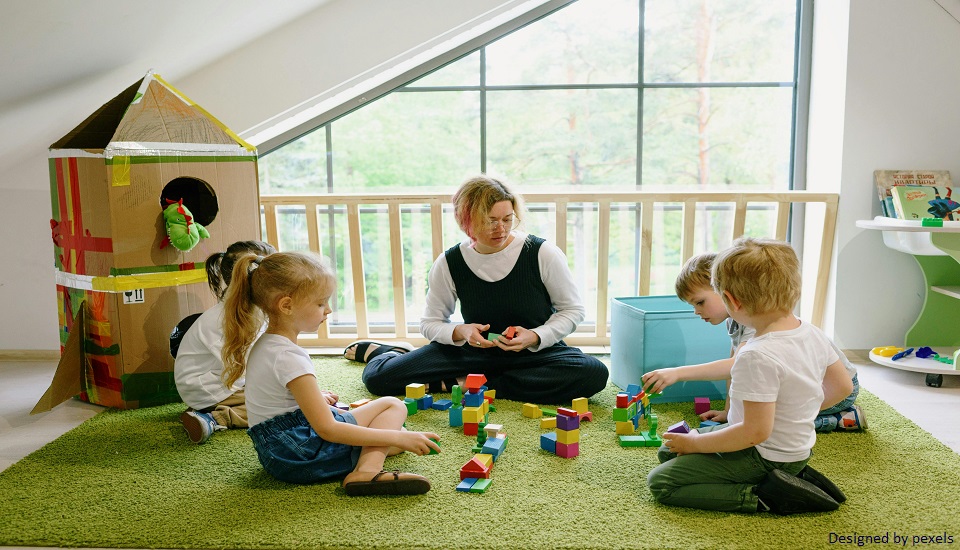The Role of Classroom Setup in Early Education
11th February 2025

The design of an early years’ classroom is more than just arranging tables and chairs- it should influence how children absorb knowledge, interact with their peers, and develop essential life skills.
Experts say that repurposing furniture to support learning in the early grades can build curiosity, support engagement, and improve learning experiences. Every learning zone must be designed to be a hub of creativity, discovery, and development.
3 Key Elements of an Effective Early Learning Environment
Young children absorb information from their surroundings. A well-structured classroom with a thoughtful layout can improve concentration and support diverse learning styles.
Below are the essential elements that a learning space must have:
1. Flexibility in Classroom Setup
A rigid classroom layout does not cater to the diverse needs of young learners.
Having flexible furniture and adaptable spaces helps in:
- Encouraging collaborative learning through group activities.
- Allowing easy movement and transitions between different tasks.
- Enabling personalized learning experiences based on student preferences.
- Accommodating children with varying needs and abilities.
2. Well-Defined Learning Zones
Classroom organization plays a significant role in managing young learners. Creating separate zones for different activities makes it easier for children to navigate their environment.
Best learning zones include:
- A cozy space with books, cushions, and comfortable seating encourages early literacy.
- An area with art supplies where children can express their creativity.
- A dedicated space with tactile materials like sand, water, or textured objects to enhance sensory experiences.
- A space with flexible seating arrangements for team-based learning and collaborative tasks.
3. Furniture That Supports Movement
Young children learn best when they can move around freely. Traditional desks and chairs may restrict their ability to explore and interact. Using child-sized furniture, low shelves, and modular seating arrangements allows children to independently access learning materials and engage in active learning.
How Classroom Design Affects Child Development
A well-planned classroom environment supports cognitive, social, and emotional development in the following ways:
- Enhances Focus and Attention
A clutter-free, organized space with designated areas for different activities helps children stay engaged and minimizes distractions. A structured yet flexible setup supports their concentration and learning efficiency.
- Encourages Independence
When children can easily access learning materials and navigate their spaces, they develop a sense of independence. Open shelves, labeled bins, and accessible tools promote self-directed learning and decision-making skills.
- Supports Social and Emotional Growth
Classrooms designed for interaction promote healthy relationships among peers. A well-arranged space encourages teamwork, communication, and social engagement. Soft seating areas and group activity tables help children build connections and develop empathy.
- Stimulates Creativity and Curiosity
A visually appealing classroom with vibrant colors, engaging decorations, and interactive learning materials fosters creativity. A mix of visual, auditory, and tactile elements stimulates curiosity and a love for learning.
5 Design Strategies for an Engaging Early Learning Space
If you are confused about how to start designing adequate classroom ambiance, here are some strategies to help you get started:
1. Incorporate Natural Elements
Bringing nature indoors enhances the learning experience. Adding plants, natural light, and wooden furniture creates a calming atmosphere. Exposure to natural elements has been linked to improved concentration and emotional well-being in children.
2. Use Child-Centered Furniture
Child-friendly furniture that is easy to move and adjust allows students to feel comfortable in their environment. Adjustable tables, low storage units, and soft seating arrangements cater to the needs of young learners.
3. Optimize Lighting and Acoustics
Proper lighting reduces eye strain and enhances focus. A combination of natural light and warm artificial lighting creates a balanced environment. Soundproofing techniques, such as rugs and curtains, help control noise levels and maintain a calm learning atmosphere.
4. Integrate Interactive Learning Tools
Incorporating interactive walls, digital boards, and hands-on learning stations makes learning more engaging. Interactive elements help children grasp concepts more effectively through multi-sensory experiences.
5. Promote Organization and Accessibility
A well-organized classroom with labeled bins and clearly defined spaces encourages responsibility and self-sufficiency. When materials are easy to locate, children can transition smoothly between activities without disruption.
Challenges in Classroom Design and Possible Solutions
While designing an optimal classroom for early years education, you might face several challenges:
- Limited Space
Not all classrooms have ample space, but creative layout planning can maximize available areas.
Use multi-functional furniture, vertical storage, and collapsible tables to make the most of small classrooms.
- Budget Constraints
Schools and educators often have limited budgets for classroom redesign.
Instead of costly renovations, DIY learning stations, second-hand furniture, and repurposed materials can be cost-effective alternatives.
- Meeting Diverse Learning Needs
Every child has different learning preferences.
Create a combination of quiet areas, active spaces, and personalized learning stations to enable inclusivity and diverse learning styles.
Bottom Line
The design of a classroom is crucial. A well-organized space promotes creativity, helps students focus, and encourages independence. With flexible furniture, clear learning areas, natural elements, and interactive tools, you can create an environment that can host exploration and curiosity. Moreover, you can invest in Early Years Care and Education courses in India and become an expert who supports strong cognitive, social, and emotional growth in young learners.
We believe education should be accessible for everyone. That’s why we don't charge for our blogs. Find the right course that will help you in your career with us, contact us at - 1800–212–6400. You can mail us at act@asiancollegeofteachers.com.
Written By : Abhishek











